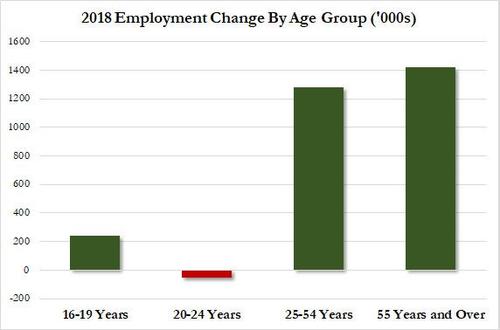No products in the cart.
Posts
The Hot and Cold Employment Picture
As has been widely reported, the US economy is on fire. We added 312,000 jobs in December alone, and the unemployment rate now sits at just 3.9%, an incredibly low number by historical standards. That basically means that anyone who wants a job can get a job.
Right? Or is it more complicated than that?
As financial website ZeroHedge notes dives into the numbers, they present more of a mixed picture; one that should be of interest to educators. When they break down the 2018 employment data by age, they found that older workers – those in the 25-54 and 55+ age categories – did in fact see huge gains in employment in 2018. However younger workers, both in the 16-19 and 20-24 age categories, saw much less growth. In fact, those between 20-24 years old saw a decline in employment last year!

Of course, these are national numbers across all industries and occupations. Educators in Career and Technical Education, particularly those connected to high-demand industries, are likely seeing their students being snapped up as soon as they graduate or earn a certificate. Sometimes even before then. However, as a group our young people are clearly not benefiting from the employment boom to the extent that their older counterparts are.
Those students struggling to find work after graduation represent a missed opportunity for both employers and educators. Too many of our students still move through the education system without any information on industry needs and in-demand occupations. Students believe that simply getting a college degree – any college degree – will open the doors to a high-paying future.
It’s time that all students have access to foundational knowledge and skills such as awareness of careers and industries, career exploration opportunities, development of career navigation skills, and direct exposure to employers through work-based learning opportunities. It doesn’t make sense that we have six million unfilled jobs and recent graduates walk out with a great deal of debt and very few employment prospects.
Career and Technical Education, career academies, and other models have done a tremendous job of exposing students to opportunities and preparing them for success in high-demand fields. Now it’s time to give every student access to similar opportunities.
Brett Pawlowski is Executive Vice President of NC3T, the National Center for College and Career Transitions (www.nc3t.com). NC3T provides planning, coaching, technical assistance and tools to help community-based leadership teams plan and implement their college-career pathway systems and strengthen employer connections with education.

